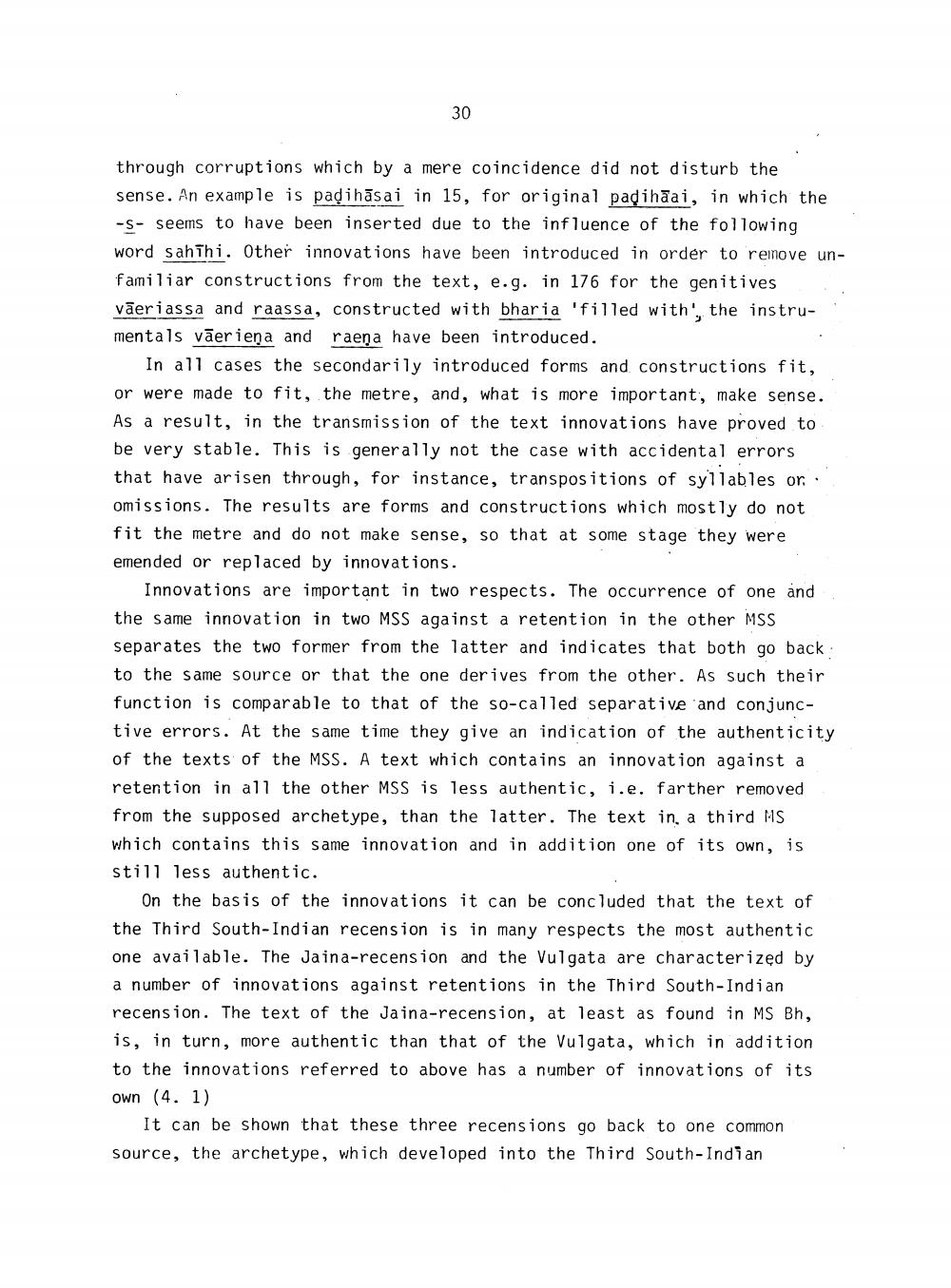________________
30
through corruptions which by a mere coincidence did not disturb the sense. An example is padihāsai in 15, for original padihāai, in which the --- seems to have been inserted due to the influence of the following word sahihi. Other innovations have been introduced in order to remove unfamiliar constructions from the text, e.g. in 176 for the genitives vāeriassa and raassa, constructed with bharia 'filled with, the instrumentals vāeriena and raena have been introduced.
In all cases the secondarily introduced forms and constructions fit, or were made to fit, the metre, and, what is more important, make sense. As a result, in the transmission of the text innovations have proved to be very stable. This is generally not the case with accidental errors that have arisen through, for instance, transpositions of syllables or omissions. The results are forms and constructions which mostly do not fit the metre and do not make sense, so that at some stage they were emended or replaced by innovations.
Innovations are important in two respects. The occurrence of one and the same innovation in two MSS against a retention in the other MSS separates the two former from the latter and indicates that both go back to the same source or that the one derives from the other. As such their function is comparable to that of the so-called separative and conjunctive errors. At the same time they give an indication of the authenticity of the texts of the MSS. A text which contains an innovation against a retention in all the other MSS is less authentic, i.e. farther removed from the supposed archetype, than the latter. The text in, a third MS which contains this same innovation and in addition one of its own, is still less authentic.
On the basis of the innovations it can be concluded that the text of the Third South-Indian recension is in many respects the most authentic one available. The Jaina-recension and the Vulgata are characterized by a number of innovations against retentions in the Third South-Indian recension. The text of the Jaina-recension, at least as found in MS Bh, is, in turn, more authentic than that of the Vulgata, which in addition to the innovations referred to above has a number of innovations of its own (4. 1)
It can be shown that these three recensions go back to one common source, the archetype, which developed into the Third South-Indian




